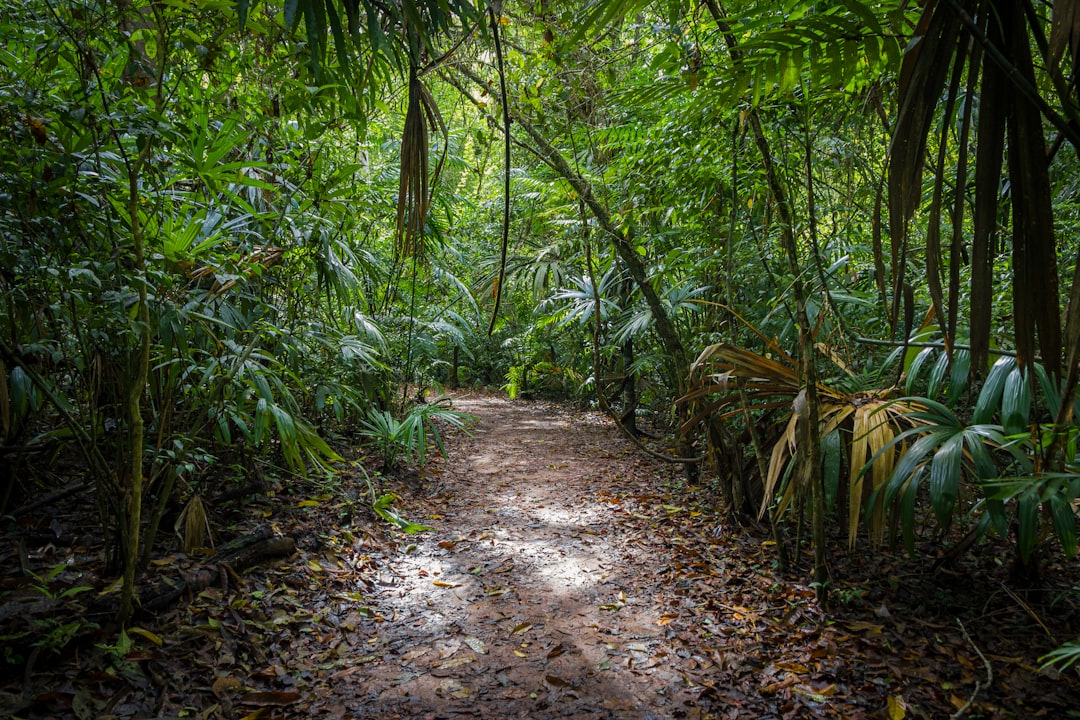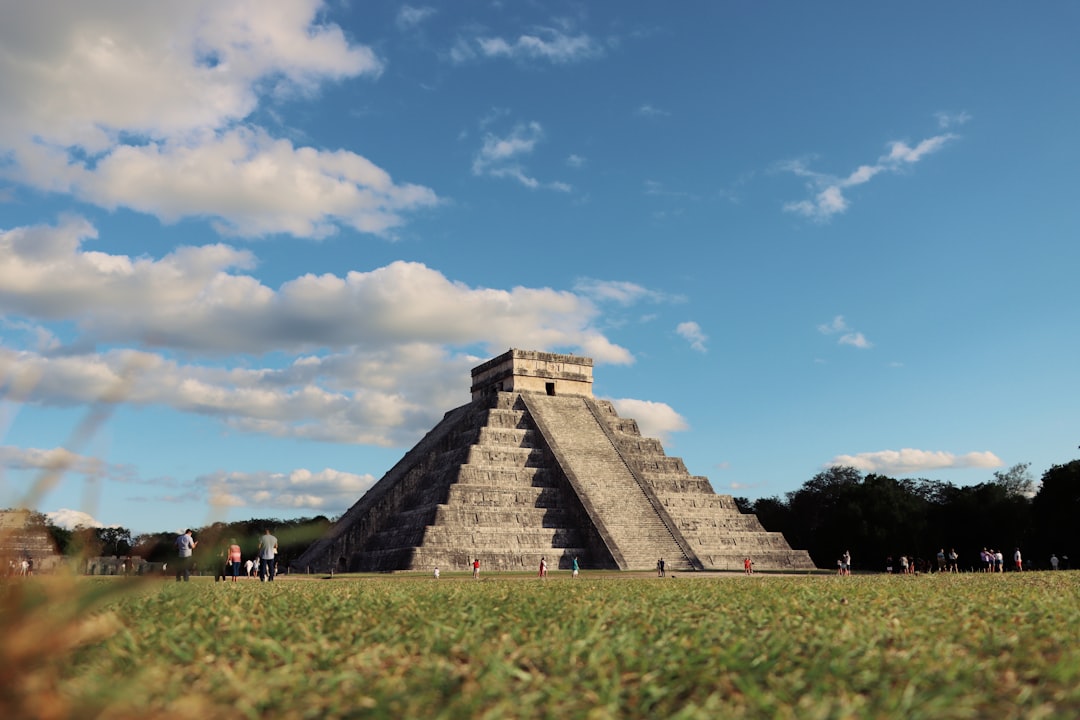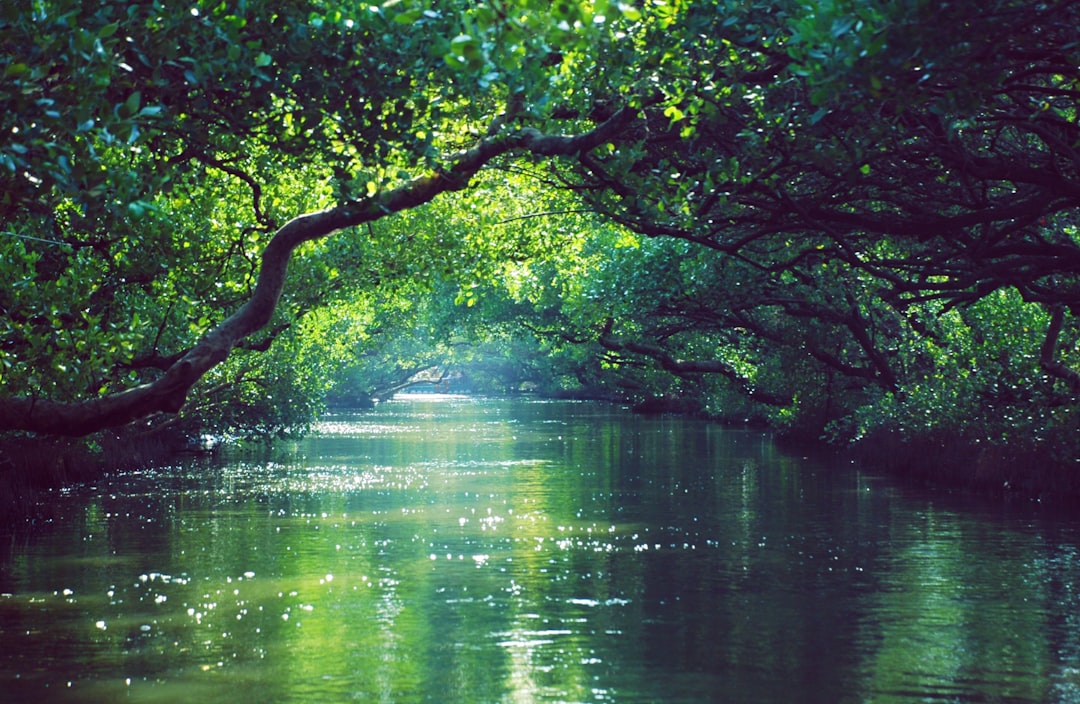Journey to Xibalba: Taking the Plunge into the Maya Underworld
Journey to Xibalba: Taking the Plunge into the Maya Underworld - The Legend of Xibalba
The legend of Xibalba has captivated the imagination of many for centuries. This mystical underworld was central to Maya cosmology and featured prominently in their mythological stories. Understanding the legend provides insight into the Maya worldview and sheds light on their spiritual beliefs.
According to Maya texts like the Popol Vuh, Xibalba was ruled by sinister gods who delighted in human suffering. It was a gloomy realm filled with traps and tests designed to kill any mortal brave enough to enter. The lore tells of twin hero gods, Hunahpu and Xbalanque, who ventured into Xibalba to confront the Lords of Death.
After navigating the treacherous underworld, the hero twins endured many trials but ultimately triumphed over the Xibalban gods in a ballgame. Their victory brought light and hope back to the world, while the defeated death gods were condemned to rule the gloomy underworld alone.
Today, adventurers still feel the call to journey into the Maya underworld, tracing the steps of the legendary hero twins. The most accessible entrance is located at Cenote Xtacumbilxunan in Yucatán, Mexico.
Descending into its murky depths is an eerie experience, especially with knowledge of the legends. The ominous entrance seems to dare mortals to enter and test their wit against the malevolent gods said to still dwell deep inside.
Courageous cave divers make regular pilgrimages to explore Xibalba's watery labyrinths. They squeeze through tiny passages surrounded by centuries of calcite deposits, treading the same route as the Maya gods and heroes of lore. As they go deeper, an air of danger intensifies.
Yet some say the true test comes not from the physical challenges, but in facing one's inner demons. Xibalba represents the shadow realm of fear, doubt and ignorance within each of us. Like the hero twins, we all must find the courage to confront our weaknesses and emerge victorious with new wisdom.
Journey to Xibalba: Taking the Plunge into the Maya Underworld - Overcoming Obstacles to Enter the Underworld
Entering the Maya underworld is no simple feat. Intrepid explorers must be prepared to overcome daunting obstacles if they wish to uncover the mysteries of this subterranean realm. The challenges begin right at the threshold, as only the most committed pilgrims can even find the obscure cave entrances leading down into the depths.
Once a gateway is located, the journey gets even more difficult. Narrow passages, sheer drops, underwater tunnels and disorienting darkness all test the mental and physical limits of visitors to Xibalba. Specialized caving gear, scuba equipment, rope work and intense training are essential to continuing onward through such hazards. Even experienced spelunkers have perished or become severely injured in their attempts.
So why take the risk? What compels people to brave such an unforgiving environment? For some hardcore cavers, the appeal lies in the thrill and conquest of charting new underground territory. They are lured by the chance to be the first to uncover hidden chambers and link up complex cave networks. These pioneering explorers help expand our knowledge of what lies beneath the surface.
Other visitors feel a spiritual calling to connect with the Maya cosmology surrounding Xibalba. They hope to discover artifacts left behind by ritual ceremonies once performed deep in the caves by Maya priests. Some even partake in their own rituals, making offerings to the gods of the underworld. Their faith pushes them to endure the subterranean trials.
One famed explorer driven by spiritual purpose is Guillermo de Anda. As an archaeologist and diver, he has dedicated years to investigating flooded cave systems beneath the Yucatán peninsula. His quest is to better understand how the ancient Maya incorporated caves and cenotes into their mythology and rituals. Through his research, many stunning discoveries have been made.
His team helped connect a 4.5 mile flooded passageway with a famous cenote called Sacred Well of the Itzá. In another cave system, they uncovered remarkably well-preserved human remains dating back to 900-1200 AD.Analysis suggests these were likely ritual burials. Carved stone monuments, incense burners and ceramics were also found, indicating the caves' ceremonial past.
By piecing together clues from artifacts and sacred texts, de Anda has gained profound insight into the Maya underworld. While he acknowledges the dangers, his sense of purpose gives him the motivation to keep pushing forward. As he stated, "If we don't explore it, we'll never know what's there. And there's still a lot to be discovered."
Journey to Xibalba: Taking the Plunge into the Maya Underworld - Gods and Demons Who Rule the Underworld
According to Maya mythology, Xibalba was ruled by sinister gods who delighted in inflicting suffering on any mortal unlucky enough to stumble into their domain. Understanding who these malicious deities were provides insight into what terrors awaited the legendary hero twins and other brave souls who dared to enter the underworld. The Maya viewed caves and cenotes as sacred portals that allowed access to Xibalba, and thus gateways to interact with these powerful beings.
The highest ranked rulers of Xibalba were the demonic duo Hun-Came ("One Death") and Vucub-Came ("Seven Death"). As the overlords of death and sacrifice, they were greatly feared. It was they who devised the brutal tests that crushed the spirits of most underworld visitors. Two deceitful gods named Xiquiripat and Cuchumaquic were charged with tricking souls into failing the trials. The malevolent deity Camazotz – a gruesome bat god – was another prominent member said to inhabit the deepest cave chambers.
Lesser-known members of the pantheon included Chamiabac, a demon with the power to send fire, and Chamiaholom, who could create disaster through water. Xibalba had gods representing war like Ahalgana, Ahalpuh, and Ahalmez. Others personified more human emotions like heartsickness, pain and fear. Together, they made the underworld nightmarish for their victims.
Some explorers who seek Maya artifacts and remains in the caves describe sensing an eerie or oppressive energy, as if they're being watched by ancient entities. While physically traversing the tunnels is grueling enough, being in the perceived presence of these vicious gods adds a psychological terror.
Yet interactions with such beings have motivated some pilgrims. Famed underwater archaeologist Guillermo de Anda tells of meeting a Maya priest deep inside a flooded cave. The elder claimed to be guarding a portal to Xibalba so that only those deemed worthy may pass through. He warned de Anda not to disturb the spirits of Muknal Cave, where many artifacts were found. Experiences like this give de Anda a sense of purpose to respectfully study the underworld.
Other accounts tell of a shapeshifting goddess named Ix Chel encountered in the caves. She was thought to serve as a spirit guide to those undertaking vision quests or rituals in her dark domain. Brave shamans would invoke her to help gain wisdom from the gods residing there. However, they risked angering her and being struck down into the watery depths.
Journey to Xibalba: Taking the Plunge into the Maya Underworld - Navigating the Grueling Tests and Traps
According to the sacred legends, the journey through Xibalba was designed to be nearly impossible to survive. The crafty Lords of Death devised cruel tricks and traps to terrorize and destroy any mortal bold enough to enter their domain. Tales describe how the hero twins Hunahpu and Xbalanque were forced to undergo harrowing trials that challenged their resourcefulness and will to live at every turn. While much wisdom can be gained from bravely facing one's fears, the sinister nature of some challenges proved too deadly even for the clever gods themselves.
Modern explorers of the caves still encounter many of the disorienting and dangerous obstacles described in the mythology. Deceitful forks in the paths, sheer drops, fast-flowing subterranean rivers, convoluted tunnels and chokingly narrow crevices all test even the most skilled spelunkers. Specialized equipment and intense training are essential, yet cannot prevent all accidents. Cave diving through flooded passageways adds another layer of complexity and hazard. The inherent risks weigh heavily on each individual who feels called to undertake the pilgrimage.
Yet some can find meaning in taking on the trials, viewing it as an allegory for overcoming challenges in life or one's own psyche. Famed archaeologist Guillermo de Anda sees value in confronting the underworld's uncertainties, saying "Adventure means adapting to the unexpected...being confident in yourself to accept new challenges." His team anecdotally reports feeling as if they are being tested by invisible entities deep within the cave systems. Trick walls, shifting Currents and equipment failures seem to mysteriously arise when they disturb certain artifacts or remains. Locals warn that the vengeful Lords of Death still inhabit the shadows. Whether real or imagined, the sense of being judged gives an otherworldly gravity to each step forward through the menacing passages. Not all who enter here will emerge unscathed or at all.
Journey to Xibalba: Taking the Plunge into the Maya Underworld - Surviving the Houses of Terror
The hero twins' journey through Xibalba subjected them to twisted trials devised by the sinister Lords of Death to break their spirits. But the ultimate test lay in the feared Houses of Terror, each one rigged with supernatural dangers to induce unique horrors. Surviving this gauntlet pushed them to their absolute limits.
The first was Dark House, shrouded in complete blackness to drive victims insane. Razor-sharp blades swung out from unseen corners, requiring blind faith in one's instincts to not meet a gruesome end. Next was Jaguar House with starved beasts lunging from the shadows. Further on, Bat House enveloped souls in swarming wings and unseen cacophony.
But the worst was Cold House, not for its frigid temperatures but for the phantoms lurking within. Shrieks of loved ones cried out from unseen pits, conjuring paralyzing visions of failure to protect them. According to texts, this was intended to unravel one's deepest emotional scars. Many reached this stage only to succumb to mental collapse.
Modern day pilgrims know well the psychological impacts the underground can inflict. Even without supernatural forces, the darkness and isolation prey on imagination and instill primal panic. Deprived of senses, the mind can spiral as oxygen runs short. Composed cavers stick to routines, knowing unraveling their discipline makes accidents more likely. Seasoned explorers say surrendering control to the underworld's whims leaves you fully at its mercy.
Yet some feel called to face such fears intentionally. Psychonaut cavers using sensory deprivation and trance rituals aim to induce visionary states. They describe encounters with ancient entities who impart metaphysical revelations. While dismissed as hallucinations by many, they see value in willingly diving into the darkest recesses of mind and spirit. They believe jewels of wisdom await any who withstand the harrowing journey inward.
Journey to Xibalba: Taking the Plunge into the Maya Underworld - Seeking Redemption and Rebirth
While a harrowing journey, descending into Xibalba ultimately offers the promise of renewal to those strong enough to endure its trials. This opportunity for spiritual redemption and rebirth has compelled many modern pilgrims to willingly undergo the suffering required to reach it.
For the Maya, Xibalba was perceived as the dark counterpart to our mortal realm. But hidden in its depths was precious wisdom and transformation unattainable in the conscious world. To uncover these secrets, one first had to shed attachments, fears and illusions in the most visceral way. By breaking themselves down completely, they believed ancient knowledge could then rebuild them into purified beings.
Famed explorer Guillermo de Anda has dedicated years to honouring this process. His dives into flooded caves are conducted with ritual intention to honour the sacrificial journeys once made by Maya priests. "I feel the mysteries of life and death represented here, and our eternal connection to those who came before," he stated after emerging from a strenuous expedition.
Other modern cavers describe being called to face not just physical challenges, but their own inner demons. The darkness and isolation provokes intense self-reflection, forcing them to reckon with regrets, doubts and insecurities. By confronting rather than avoiding such issues, they aim to wrest wisdom from their pain.
Psychonautic cavers pursue this catharsis consciously through sensory deprivation rituals. Floating weightless in absolute darkness, they induce trance states where buried traumas rise to the surface. The experience is often terrifying yet ultimately cleansing. Afterwards, they describe feeling emotionally and spiritually renewed.
Of course, not everyone connects it to mysticism. For many cavers, facing their fears underground simply builds grit and self-knowledge. Pushing past claustrophobia into tight tunnels instills confidence. Solving problems without panic boosts resourcefulness. The skills gained surviving Xibalba then transfer to everyday challenges.
Yet close calls are frequent, as the margin between revelation and destruction is thin. All cavers understand they may pay a heavy toll for any insights gained. But most feel the risk is justified by a chance at enlightenment otherwise inaccessible above ground. They trust their training, judgment and luck to carry them through safely.
Journey to Xibalba: Taking the Plunge into the Maya Underworld - The Promise of Paradise for the Victorious
The lore of Xibalba offers an enticing carrot on a stick for those daring to traverse its depths – the promise of paradise. According to legend, for the hero twins who withstood the underworld’s onslaught of horrors, their victory earned them ascension into the heavens. There they became eternal companions of the sun and moon, honored ancestors to the Maya people. The prospect of such divine reward has fueled many a mortal through the hellish pilgrimage.
Today, few explorers expect literal deification. But discovering truth in the myth can profoundly impact one’s outlook. Famed cave diver Guillermo de Anda has dedicated years to studying sites related to Maya cosmology. While grueling and dangerous, his expeditions connect him to a deep sense of purpose. “In these submerged caves I’m honored to pay homage to the rituals of our ancestors,” he stated. “There is knowledge here we have yet to understand.” His team examines ancient artifacts found in the flooded passages, gaining insight into the Maya underworld. While not yet paradise, uncovering such history is profoundly meaningful.
For cavers exploring the absolute depths of flooded tunnels or squeezing through never-before-seen cracks, there is wonder in being the first to unveil nature’s secrets. Like astronauts breaching a new frontier, they feel the pride of going where no human has gone before. That moment of breakthrough discovery, after countless hours overcoming challenges, offers a euphoric rush.
Even without artifacts or records, the journey itself can provide revelation. Deprivation rituals in remote caverns push mind, body, and spirit. Psychonauts emerge with expanded consciousness, renewed purpose, and liberation from fears. The challenges force intense introspection, stripping away all distractions. Surviving with sanity intact grants a sense of wholeness.
Of course, not every explorer seeks enlightenment. For many cavers, the appeal of Xibalba is using skills to conquer hazards. Mapping new tunnels rewards them with prestige in the caving community. Building mental strength by overcoming claustrophobia or trauma gives them confidence to handle life aboveground.
Journey to Xibalba: Taking the Plunge into the Maya Underworld - Modern-Day Pilgrimages to Sacred Sites
While the hero twins may be mythical, the mysterious underworld they voyaged through is very real. Scattered throughout Central America are cave systems, cenotes and ancient ruins once used by the Maya to access Xibalba. Modern adventurers feel called to visit these sacred portals, hoping to connect with the energy and lore surrounding them.
At Chichen Itza in Mexico, thousands gather during equinoxes to witness the serpent god Kukulkan emerge from the shadows. Only on these rare days does the famous El Castillo pyramid project its undulating illusion. Watching this breathtaking spectacle evokes the magic of Maya cosmology. However the massive crowds detract from the solemn air.
For a more immersive experience, many prefer smaller sites. Guatemala offers cave rituals at Lake Atitlán or the stone monuments of Iximche. Seeking village shamans as guides adds insight into enduring spiritual traditions. Remote ruins like Uaxactun provide an almost ghostly atmosphere with few tourists in sight.
Of course most intriguing are the cave networks themselves. Southern Belize contains massive flooded labyrinths researchers are still struggling to fully map. Dropping through the sinkholes oddly named Actun Tunichil Muknal or Xibalba feels properly adventurous. Mystical petroglyphs at Ek Balam Vortex in Yucatan lead explorers to hidden underground rivers.
Yet danger is ever present. At Midnight Terror Cave in Belize, four students tragically perished after flash floods trapped them. Mexican authorities recently closed the famed Dos Ojos underwater system following multiple diver deaths. Proper training, equipment and caution are vital.
For Swiss anthropologist Giancarlo Ligabue, accessing Xibalba's depths became a lifelong passion. He pioneered techniques for underwater cave exploration in the 1970s. His dives revealed minds of human skulls stacked around altars and stone monuments deep inside. Truly humbling glimpses into the Maya ritual relationship with this realm.
“Only by overcoming great obstacles can one find great rewards,” Ligabue wisely stated. His willingness to take calculated risks expanded our knowledge. But his respect for the sites’ heritage was equally crucial. All who attempt to walk with ghosts here must balance boldness with reverence.




